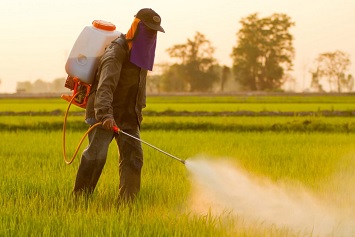In January 2017, the EPA amended its regulations affecting the certification of applicators of restricted use pesticides (RUPs). In writing the amendments, the Agency needed to balance two somewhat opposing forces—strengthen requirements to ensure that applicators and particularly young applicators, as well as the families of applicators, were not harmed by exposure to RUPs while at the same time providing that the requirements were not overly onerous and expensive for the very large population who use RUPs.

The EPA has registered about 1,200 RUPs, which, the Agency estimates, are applied by about 1 million applicators nationwide, including those working on many small farms under the supervision of the farm owner/operator.
Under the revisions, states were given 3 years to develop plans to certify applicators in line with the revised requirements. But the rule also addresses noncertified applicators or those who carry out the great majority of RUP applications. Here we summarize revised requirements affecting noncertified applicators.
What Is Restricted Use?
RUPs have the potential to cause unreasonable adverse effects to the environment and injury to applicators or bystanders without added restrictions. The EPA’s restricted use classification restricts a product, or its uses, to use by a certified applicator or someone under the certified applicator’s direct supervision.RUPs are not available for purchase or use by the general public.
Emphasis on Competency
As noted, the revised rule was intended to minimize the exposure risks faced by children who apply RUPs. Among other things, the rule established minimum ages for being certified as an applicator or for using RUPs as a noncertified applicator. Also, when compared to the preexisting certification regulations, the revisions require a heightened level of competency for both certified and noncertified applicators.
The Agency defines competency as having “the practical knowledge, skills, experience, and judgment necessary to perform functions associated with restricted use pesticide application without causing unreasonable adverse effects, where the nature and degree of competency required relate directly to the nature of the activity and the degree of independent responsibility.”
The final rule allows four options for noncertified applicators to establish their competency. They may complete pesticide safety training covering content outlined in the rule; complete pesticide safety training for handlers as required by the Worker Protection Standard (40 CFR 170.305); meet requirements established by a certifying authority that satisfy or exceed the standards for noncertified applicator qualifications established in the final rule; or become a certified applicator in a category other than the category covering the supervised application. Also, noncertified applicators must receive annual training or meet the requirements adopted by the certifying authority as part of the certification plan.
Direct Supervision
Under the revisions, a noncertified applicator is, by definition, a person who is using RUPs under the direct supervision of a person certified as a commercial or private applicator in accordance with the federal requirements. Direct supervision means “the act or process whereby the application of a pesticide is made by a competent person acting under the instructions and control of a certified applicator who is responsible for the actions of that person and who is available if and when needed, even though such certified applicator is not physically present at the time and place the pesticide is applied. [emphasis added]. This definition comes directly from the Federal Insecticide, Fungicide, and Rodenticide Act (FIFRA), the federal statute that provides the EPA with the authority to issue the certification rule.
Other Requirements
- The supervising applicator must verify that noncertified applicators have satisfied the necessary requirements and must have access to records documenting that the qualification requirement has been satisfied.
- A certified applicator supervising noncertified applicators must be certified in each category relevant to the supervised application, provide noncertified applicators with access to a copy of the labeling for the RUPs used, and ensure that a means for immediate communication between the supervising applicator and noncertified applicators under his or her direct supervision is available.
- Certifying authorities have the option to adopt the standards for noncertified applicators outlined in the rule, establish alternative requirements for noncertified applicators that meet or exceed the standards in the rule, and/or prohibit the use of RUPs under the supervision of a private or commercial applicator.
Training
The revisions state that general noncertified applicator training must be presented to noncertified applicators either orally from written materials or audiovisually. Trainers must be either certified applicators, be designated by the EPA as trainers of certified applicators, or have completed an EPA-approved pesticide safety train-the-trainer program for trainers of handlers under 40 CFR part 170. Also, the revisions at 40 CFR part 171.201 indicate that noncertified applicator training must include a minimum of 25 topics, including, at the top of the list, the acute and chronic effects, delayed effects, and sensitization that may result from exposure to RUPs.
The final revisions were published in the January 4, 2017, Federal Register (FR).
